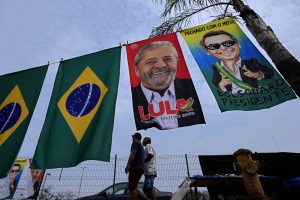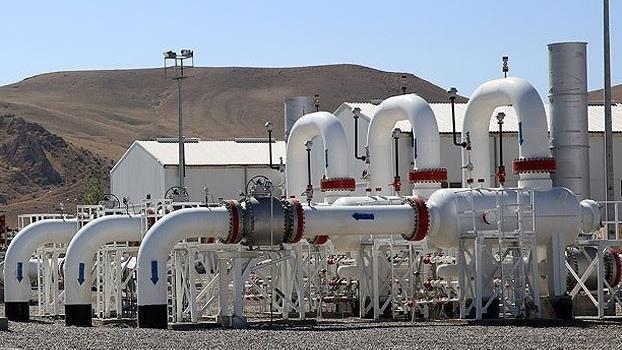
During the first few decades of the post-war era, the U.S. considered Iran one of its closest geostrategic allies, especially after the CIA overthrew Iran’s democratically elected government in 1953 and restored Mohammad Reza Pahlavi as Iran’s leader. However, since the 1979 revolution, which abolished the monarchy and established an Islamic republic, the U.S. and Iran have been mortal enemies, largely due to the role that Israel occupies in the region. In this context, during the last couple of decades, the thorniest issue in the U.S.-Iran relationship has been Tehran’s nuclear program, which, Iran says, is focused on energy, not weapons. Israel has been adamantly opposed to the program, even though it is accepted beyond dispute that Israel itself is a nuclear power. In 2015, Iran and several other countries, including the United States, reached the Joint Comprehensive Plan of Action agreement, according to which Iran was willing to dismantle much of its nuclear program and open its facilities to nuclear inspections in exchange for billions of dollars of relief support. However, the Trump administration withdrew U.S. support from the agreement — and Israel continued its policy of sabotage and assassination of scientists.
Current talks between Washington and Tehran’s rulers to restore the 2015 nuclear agreement have been stalled, and there is little hope that progress will be made any time soon. Naturally, the U.S. places the blame on Tehran. However, U.S. propaganda grossly distorts the reality of the situation, Noam Chomsky points out in this exclusive interview for Truthout. The barriers to diplomacy are none other than Israel and the United States, says Chomsky.
C.J. Polychroniou: Noam, the U.S. and Iran are at odds with each other, having difficulty even talking to each other. Why do they hate each other so much, and how much of a role does Israel’s shadow play in this continuous drama?
Noam Chomsky: At the risk of sounding like a broken record, I’d like to say a few words, once again, on why I feel that the entire framework in which this issue is discussed is seriously distorted — yet another tribute to the enormous power of the U.S. propaganda system.
The U.S. government has been telling us for years that Iranian nuclear programs are one of the gravest threats to world peace. Israeli authorities have made it clear that they will not tolerate this danger. The U.S. and Israel have acted violently to overcome this grave threat: cyberwar and sabotage (which the Pentagon regards as aggression that merits violence in self-defense), numerous assassinations of Iranian scientists, constant threats of use of force (“all options are open”) in violation of international law (and if anyone were to care, the U.S. Constitution).
Evidently, it is regarded as a most serious issue. If so, we surely want to see whether there is some way to lay it to rest. There is: Establish a nuclear weapons-free zone (NWFZ) in the Middle East, with inspections — which, we know, can work very well. Even U.S. intelligence agrees that before the U.S. dismantled the joint agreement on nuclear weapons (JCPOA), international inspections of Iran’s nuclear program were successful.
That would solve the alleged problem of Iranian nuclear programs, ending the serious threat of war. What then is the barrier?
Not the Arab states, which have been actively demanding this for decades. Not Iran, which supports the measure. Not the Global South — G-77, 134 “developing nations,” most of the world — which strongly supports it. Not Europe, which has posed no objections.

The barrier is the usual two outliers: the U.S. and Israel.
There are various pretexts, which we may ignore. The reasons are known to all: The U.S. will not allow the enormous Israeli nuclear arsenal, the only one in the region, to be subject to international inspection.
In fact, the U.S. does not officially recognize that Israel has nuclear weapons, though of course it is not in doubt. The reason, presumably, is that to do so would invoke U.S. law, which, arguably, would render the massive U.S. aid flow to Israel illegal — a door that few want to open.
All of this is virtually undiscussable in the U.S., outside of arms control circles. On rare occasions, the major media have come close to bringing up the forbidden topic. A year ago, New York Times editors proposed “One Way Forward on Iran: A Nuclear-Weapons-Free Persian Gulf.”
Note: Persian Gulf, not Middle East. The reason, the editors explain, is that Israel’s nuclear weapons are “unacknowledged and nonnegotiable.” Filling in the gaps, they are unacknowledged by the U.S. and are nonnegotiable by U.S. fiat.
In brief, there is a straightforward approach to addressing this grave threat to world peace, but it is blocked by the global hegemon, whose power is so enormous that the topic can barely even be discussed. Rather, we must adopt the framework imposed by U.S. power and keep to the deliberations over renewing some kind of agreement over Iranian nuclear weapons.
Another matter that must be sidelined, though it is so obvious that even the grandest propaganda system cannot entirely efface it, is that the current crisis arose when the U.S. unilaterally destroyed the JCPOA, over the strenuous objections of all other signers and the UN Security Council, which had endorsed it unanimously. The U.S. then imposed harsh sanctions on Iran to punish it for the U.S. dismantling of the agreement. Again, other signers strenuously objected, but they obeyed: The threat of U.S. retribution is too awesome, as in many other cases; notoriously the crushing Cuba sanctions, opposed by the whole world apart from the two usual outliers, but obediently observed.
Again, I apologize for continually reiterating all of this. It must, however, be understood. Having made that gesture, let’s accept reality, subordinating ourselves to the mighty U.S. propaganda system, and keep to the permitted framework of discussion.
Turning finally to the question, first, Israel’s role is more than shadow play. Israel is right at the center of the story, both in its constant violent attacks on Iran and in the “unacknowledged” nuclear arsenal that blocks to path to diplomatic settlement, thanks to its superpower protector.
On mutual hate, we should remember that we are talking about governments. The U.S. and Iranian governments were close allies from 1953, when the U.S. overthrew the parliamentary government of Iran and reinstalled the Shah’s dictatorship, until 1979, when a popular uprising overthrew the Shah and Iran switched from favored friend to reviled enemy.
Iraq then invaded Iran and the incoming Reagan administration turned to lavish support for its friend Saddam. Iran suffered huge casualties, many from chemical weapons while the Reaganites looked away and even tried to shift responsibility to Iran for Saddam’s murderous chemical war against Iraqi Kurds. Finally, direct U.S. intervention swung the war in Iraq’s favor. After the war, President Bush Sr. invited Iraqi nuclear engineers to the U.S. for advanced training in weapons production, a serious threat to Iran of course. And the U.S. imposed harsh sanctions on Iran. So, the story continues.
U.S. charges against Iran are too familiar to need reviewing.
Unsurprisingly, nuclear talks between the U.S. and Iran have stalled again and it is unlikely that there will be a deal any time soon — if at all — to restore their 2015 nuclear deal. First, what do you see as the stumbling blocks in these talks? And didn’t Iran already make a huge concession when it agreed to the 2015 nuclear agreement without requiring that Israel does away with its own arsenal of nuclear weapons?
Negotiations, through European intermediaries, seem to have been put on hold until after the U.S. November elections, at least. There are outstanding disagreements on a number of issues. The most important, for now, are reported to be Iranian foot-dragging on inspection of traces of uranium that bear on whether Iran had an undeclared weapons program before 2003. In contrast, Israeli nuclear weapons programs are nonnegotiable by U.S. fiat, not even subject to inspection.
Iran’s relationship with Russia has been further strengthened since the start of the Ukraine war. Do such moves on the part of Tehran’s rulers indicate the possibility of a complete break from the West?
It’s hard to see how the break should go much farther. Iran’s closer relations with Russia are part of a general global realignment, its contours unclear, involving the major Asian states and Russia-China links.
How likely is it that Israel will attack Iran’s nuclear facilities?
Israel has repeatedly attacked these facilities with sabotage and assassination. It is likely to proceed with further efforts to prevent Iran from gaining the capability to produce nuclear weapons — which many countries have.
Iranian leaders have consistently claimed that they have no intention of producing nuclear weapons. I have no idea what their strategic thinking might be. Perhaps they are thinking along the lines of U.S. nuclear doctrine: that “nuclear weapons must always be available, at the ready, because they ‘cast a shadow over any crisis or conflict’” (Essentials of Post-Cold War Deterrence, STRATCOM 1995). As Daniel Ellsberg has emphasized, in that respect nuclear weapons are constantly used to enable other aggressive actions with impunity.
Whatever the motives, for Iran or any other state, these weapons must be eliminated from the Earth. NWFZs are a step in this direction. A more far-reaching step is the UN Treaty on the Prohibition of Nuclear Weapons (TPNW), now in force though without the participation of the nuclear states. Iran was active in negotiation of the TPNW and was one of 122 states that voted in favor its adoption, though it has not yet signed it. These are concerns that should be uppermost in our minds, for all states, for the security of all of life on Earth.
C.J. Polychroniou is a political scientist/political economist, author, and journalist who has taught and worked in numerous universities and research centers in Europe and the United States. Currently, his main research interests are in U.S. politics and the political economy of the United States, European economic integration, globalization, climate change and environmental economics, and the deconstruction of neoliberalism’s politico-economic project. He is a regular contributor to Truthout as well as a member of Truthout’s Public Intellectual Project. He has published scores of books and over 1,000 articles which have appeared in a variety of journals, magazines, newspapers and popular news websites. Many of his publications have been translated into a multitude of different languages, including Arabic, Chinese, Croatian, Dutch, French, German, Greek, Italian, Japanese, Portuguese, Russian, Spanish and Turkish. His latest books are Optimism Over Despair: Noam Chomsky On Capitalism, Empire, and Social Change (2017); Climate Crisis and the Global Green New Deal: The Political Economy of Saving the Planet (with Noam Chomsky and Robert Pollin as primary authors, 2020); The Precipice: Neoliberalism, the Pandemic, and the Urgent Need for Radical Change (an anthology of interviews with Noam Chomsky, 2021); and Economics and the Left: Interviews with Progressive Economists (2021).




/cloudfront-ap-southeast-2.images.arcpublishing.com/nzme/LQJKSRVRNU4MH7USVN5ICFXFUQ.jpg)


/cloudfront-ap-southeast-2.images.arcpublishing.com/nzme/YJSXWQNBIP7UAMHPCLAYY4PVCI.jpg)
/cloudfront-ap-southeast-2.images.arcpublishing.com/nzme/2UEC6ROHGSRTXOC6FEWCETFDHI.jpg)
/cloudfront-ap-southeast-2.images.arcpublishing.com/nzme/NBUNEPHKYLBOD6K24V5DS4ZCMM.jpg)